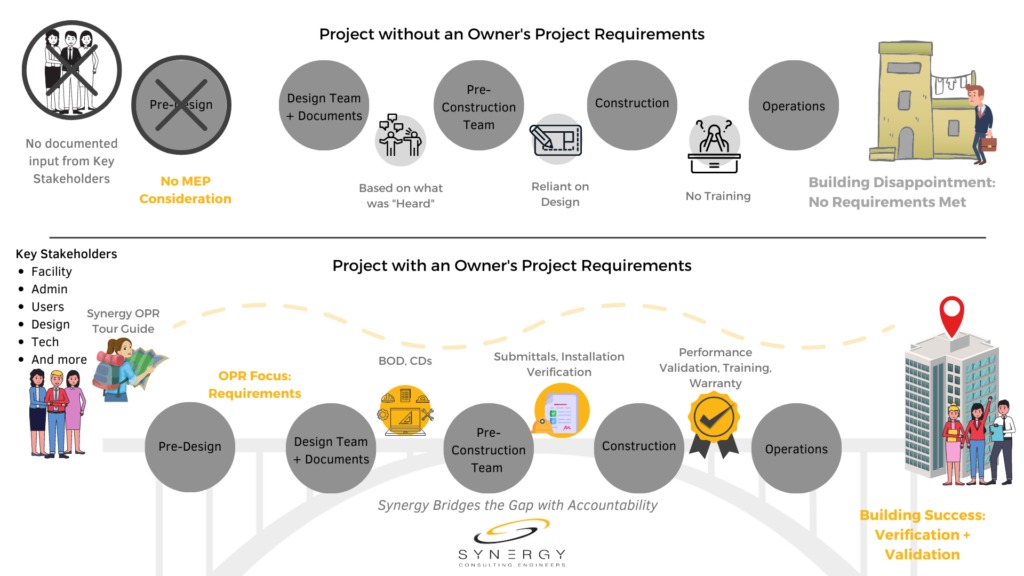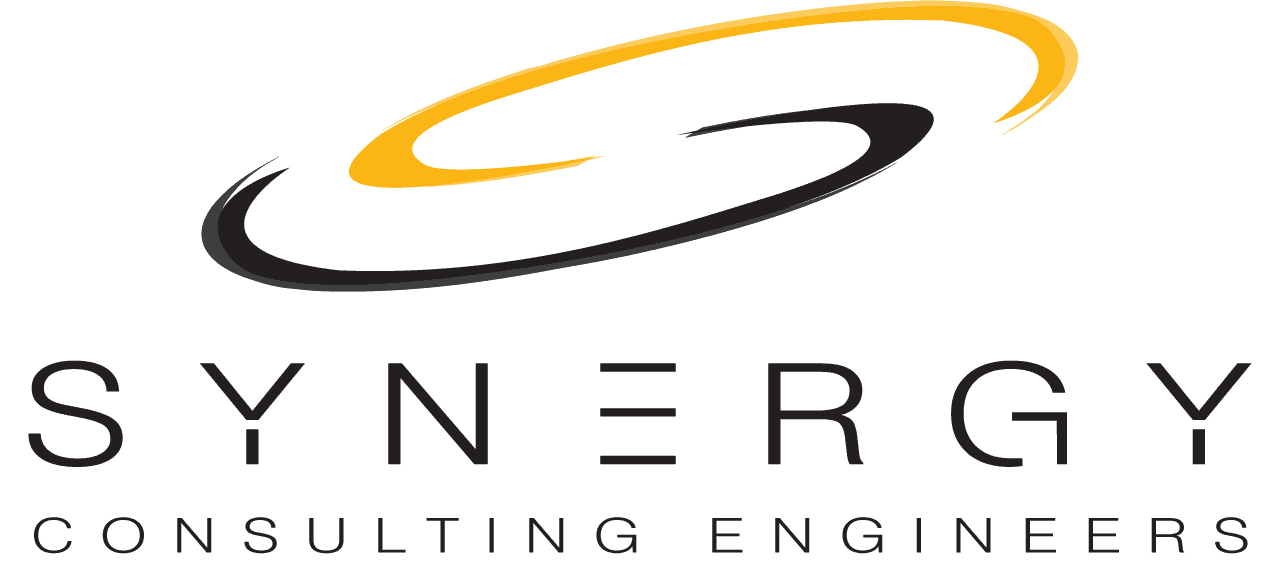
The Power of an Owner’s Project Requirements (OPR)
How an OPR Provides Accountability and Clarifies Expectations
A clearly defined and agreed upon Owner’s Project Requirements refines expectations and creates accountability. Launching a new building project could be compared to taking a road trip. The bags are packed and the vehicle is loaded and fueled. All passengers are buckled in and ready to go. With their budgets in hand, they have great anticipation of the adventure that lies ahead.
Except for a glaring problem; nobody brought a map. And nobody remembered to hire a tour guide. At the very beginning, there were brief conversations about expectations and where everyone wanted to go, but nobody thought to take notes or map anything out. Everyone assumed they understood each other and thought they had agreed, but it was a different story once they were on the road. There were unexpected twists, turns, and more roadblocks than anticipated. After a while, the initial excitement of the trip dwindled down to uninterested resignation and resentment. The stream of delays and problems looked completely different than the original idea everyone held in their minds. By the time they arrived at their final destination, each passenger was cranky, tired, and sick of the so-called adventure.
Beginning a building project without an Owner’s Project Requirements (OPR) can be compared to taking a road trip without a comprehensive map, without a plan of expected activities (sights to see, adventures to experience), and without a tour guide. Synergy has helped guide clients in achieving their project goals by mapping out a thorough OPR, beginning with the Pre-Design phase. Synergy understands the importance of acknowledging everyone’s expectations and ensuring accountability by clearly defining goals to be carried out from beginning to end. From Benchmarks to KPIs, to Guidelines and Standards, the OPR process helps bridge the gap from Owner to Design Team and Owner to Construction Team. Through an OPR, facility teams are empowered from design through operations.

Formulating a comprehensive OPR does not have to be complicated. Synergy has simplified the process into three easy steps.
Stage One: OPR Workshop
The intention of the OPR Workshop is to gather the Key Stakeholders and user groups that should have insight into the building function at completion. According to the ASHRAE Guidelines and Facility Guideline Institute Commissioning Guideline OPR Appendix, the goal of the OPR is verification. Verification is the process of ensuring procedures that are laid down in agreements, are followed. Through the OPR Workshop process, Synergy gathers information from all Stakeholders through online surveys making it easy for each person to give their valuable input at their convenience.
The survey asks open-ended questions that help capture the expectations that each Stakeholder has for the facility. Questions such as:
- List conditions important to your satisfaction in an ideal facility.
- What future purposes, programs, and users of this facility are important?
- What is important to you to properly operate and maintain this campus?
The answers from the industry’s leaders helps Synergy collect valuable input and formulate the second stage.
Stage Two: Survey Results and Benchmarking
Next, Synergy’s Engineering team scrubs the data collected from the surveys and narrows down the primary goals and pain-points to create a follow-up client-specific survey. This next online survey gathers project-specific answers from stakeholders and user groups to rate from 1-5 what is most important and least important to them. This valuable information is what Synergy will use in drafting the final OPR document.
Stage Three: OPR Implementation & Final Document
Synergy collects the survey results and drafts the OPR document. This live document is not set in stone but moves and changes with the building conditions as it progresses during construction. Unlike traditional architectural programs that conclude after construction begins, the OPR document is the comprehensive map that guides Owners and Facility Teams. The OPR acts as the destination tour guide to all stakeholders involved in the project to provide accountability based on initial goals.
The OPR includes the client-driven criteria to prove validation that is measurable, verifiable, and documentable. These defined measurables prevent frustration by not only the design and construction team but the facility operations team and occupants/end users. (See the Appendix for a sample OPR Document.)
If you have an upcoming building project and there are concerns about the assumed verbal agreements and partially recorded expectations, consider how an Owner’s Project Requirements could position your team for successful project completion.
A clearly defined, and agreed upon OPR, refines expectations and creates accountability. Each passenger on the trip toward project success has been given a platform for input. The tour guide has taken all their concerns and expectations into account and held the line with accountability. The hope that the project will turn out as expected is clearly defined and documented. And the OPR provides accountability to those driving the success of the building and its purposes.
Failing to include a destination guideline before undertaking project tends to result in a building that is energy inefficient, has high maintenance costs, and is a disappointment to facility managers and end users. Nobody wants a building that everyone hates. And it shouldn’t be complicated to reach a final destination that aligns with everyone’s expectations.
Every project will inevitably experience twists and turns but with a comprehensive Owner’s Project Requirements your next project could be guided with a roadmap that will lead your team to success. Contact us today to talk about your building goals.
The Secret Process to Proven Project Success
